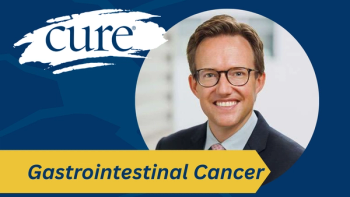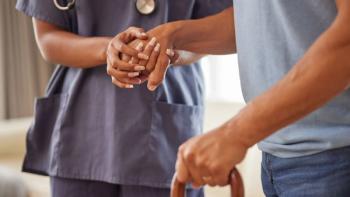
- CURE® Fall 2020 Issue
- Volume 19
- Issue 4
Exercise May Help Prevent Cancer or its Recurrence
Exercise may help prevent cancer or its recurrence and improve quality of life for survivors of the disease.
Physical activity is one of the most important things people of all ages and abilities can do to reduce their risks of several cancers and improve health during and after cancer treatment. Exercise has been strongly associated with both preventing cancer and lowering the risk of recurrence and death from the disease. In fact, a direct causal effect of exercise on cancer outcomes is currently being tested in several controlled trials.
In 2018, the American College of Sports Medicine (ACSM) reviewed thousands of research studies on exercise for cancer prevention and updated its exercise guidelines for cancer survivors. And this year, the American Cancer Society released updated recommendations that mirror parts of the ACSM guidelines.
Exercise is an important part of any effort to prevent an initial diagnosis or the recurrence of cancer. The benefits of physical activity are clear:
- Is associated with a lower risk of developing seven types of cancer (colon, breast, kidney, endometrium, bladder, stomach and esophageal).
- Is linked to Improved survival before and after breast, colorectal or prostate cancer diagnoses.
- Reduces risk of recurrence of breast, colon and prostate cancers by 20% to 40%.
- Counteracts inactivity and prolonged sitting, both of which may increase the risk of certain cancers, such as endometrial, lung and colon.
So, what should a good preventive exercise routine look like? Recommendations for cancer prevention and general health and to reduce the risk of cancer recurrence include the following:
- Engage in moderate-intensity aerobic exercise such as walking, biking, jogging or dancing for 150 to 300 minutes per week. This is agreed upon by both ACSM and the American Cancer Society.
- Perform strength-training exercises two days per week, focusing on the large muscle groups (arms, legs, chest, back and stomach). Do 12 to 15 repetitions of each.
Exercise is safe during and after cancer treatment, and there are specific guidelines for cancer survivors who want to improve their quality of life. In general, walking, bicycling, dancing or any enjoyable activity that keeps the body moving and gets the heart rate up is good.
Because many people have never exercised or don’t enjoy it, the ACSM guidelines for cancer survivors focus on the least amount of movement necessary to see significant reductions in anxiety, depression and fatigue and improvements in physical functioning and quality of life. The guidelines are based on carefully conducted studies and in many ways resemble the recommendations for cancer prevention. They are as follows:
- Avoid inactivity. This is emphasized by both the ACSM and the American Cancer Society.
- Engage in aerobic exercise at least three days a week for a total of 90 minutes, with the goal of building up to 150 to 300 minutes. This can consist of walking, cycling, swimming, jogging, dancing or any enjoyable activity that increases the heart rate and causes faster breathing.
- Perform resistance exercises at least two days a week using body weight, resistance bands, dumbbells or fitness equipment, focusing on large muscle groups. Increase the resistance or weight slowly over time, and perform at least three exercises each for upper and lower body strength.
It’s important for survivors to know that exercise is the best way to treat cancer-related fatigue because as strength and fitness improve, it becomes easier to do activities that are meaningful and important. Exercise also improves sleep and bone health. Fortunately, those who have breast cancer-related lymphedema can do both aerobic and resistance exercise without making the condition worse.
Beginning an exercise program when you don’t feel well is difficult. The first hurdle is learning to pace yourself. Exercising beyond your ability (for too long a time period or at too high an intensity) makes movement unpleasant. When it comes to aerobic exercise, start slowly and gradually build up time and intensity. The same is true for strengthening exercises. Start with light weights and gradually increase the load. Pushing too hard and feeling sore and exhausted are the most common reasons people stop a new exercise program. Be kind to your body. With some time and effort, you will feel the difference as your fatigue improves and you get stronger.
Launched by ACSM, Moving Through Cancer (tinyurl.com/y3b9qrru) is an initiative with the goal
of educating health care professionals and ensuring that all cancer survivors are engaged in an appropriate exercise or rehabilitation program. This includes a registry of cancer exercise programs worldwide, including both live and web-based programs such as Livestrong at the YMCA, Macmillan Move More and phone apps such as Cancer Exercise (annaschwartzphd. com/cancer-exercise-app/).
Also consider including a family member in exercise activities. Research shows physical and emotional health benefits for both cancer survivors and their exercise partners.
The biggest takeaway — for all survivors and their families — is simply this: Move more and sit less.
Anna L. Schwartz, Ph.D., FNP-BC, FAAN, is a professor and associate director of research at Northern Arizona University School of Nursing and an oncology nurse practitioner. A pioneer in exercise oncology research, she was co-author of the American College of Sports Medicine cancer exercise guidelines and is a member of the organization’s Moving Through Cancer task force charged with implementing the exercise recommendations into clinical practice. She is also a member of CURE®’s advisory board.
Articles in this issue
about 5 years ago
Diagnosing Asymptomatic Cancer With Blood Tests Could Save Livesabout 5 years ago
Can a Blood Test Detect Cancer in Asymptomatic Patients?



